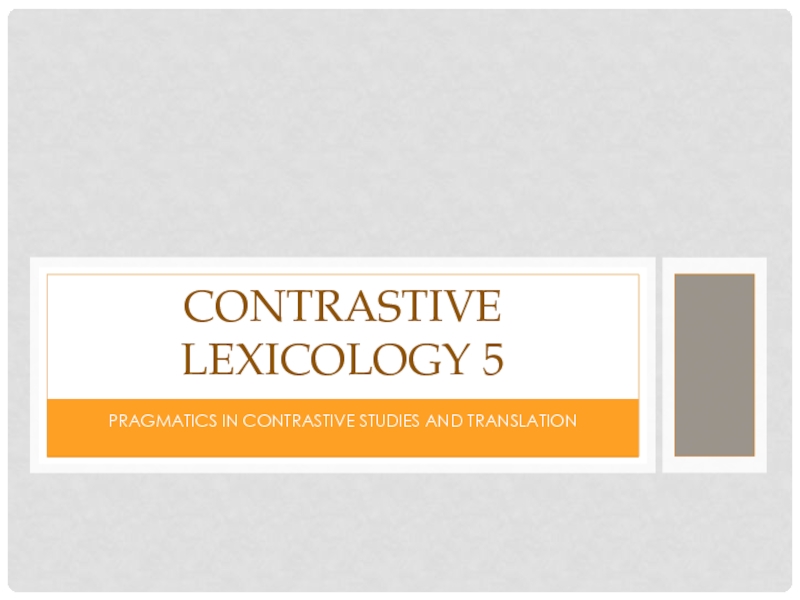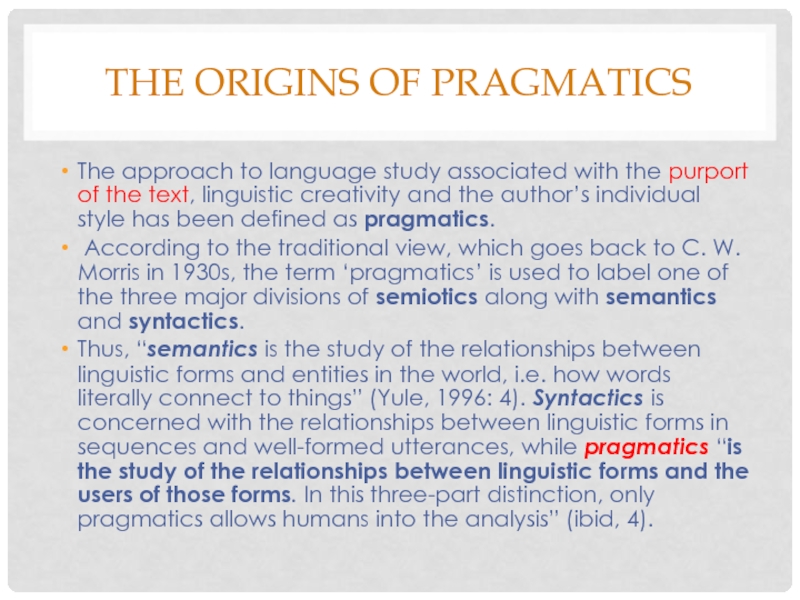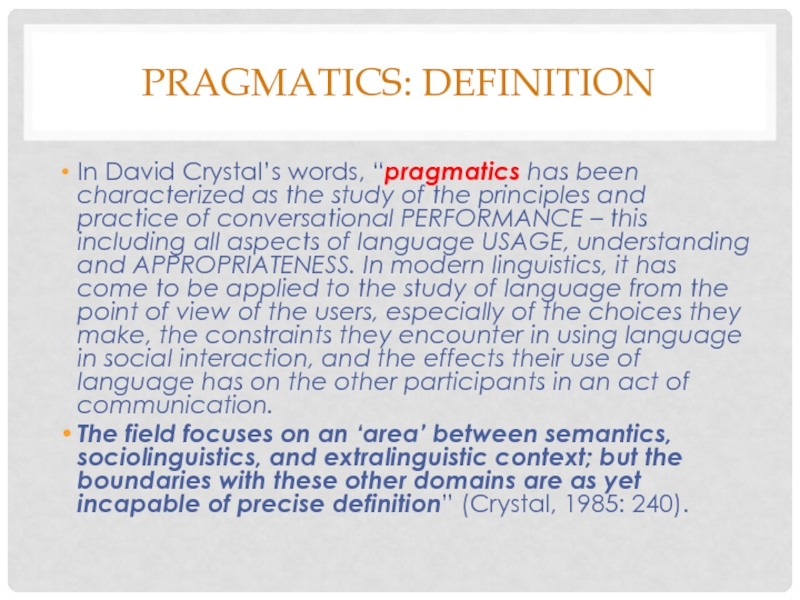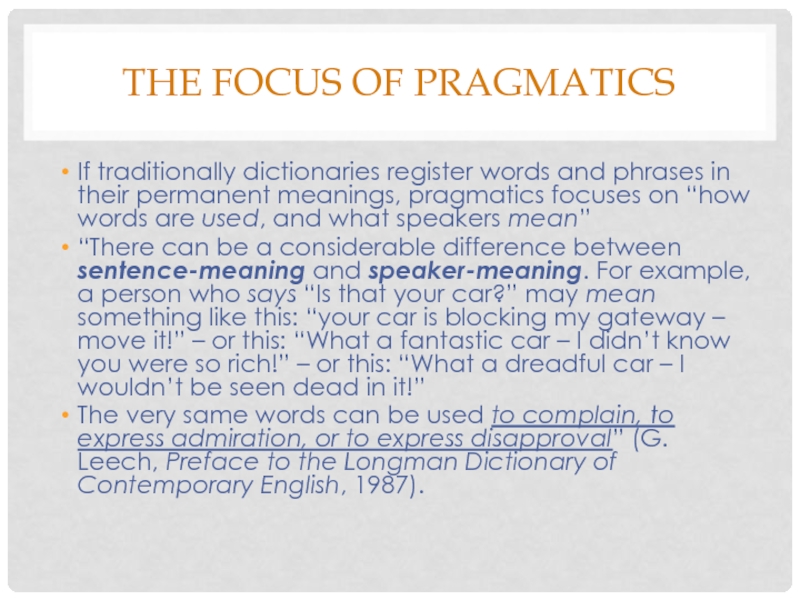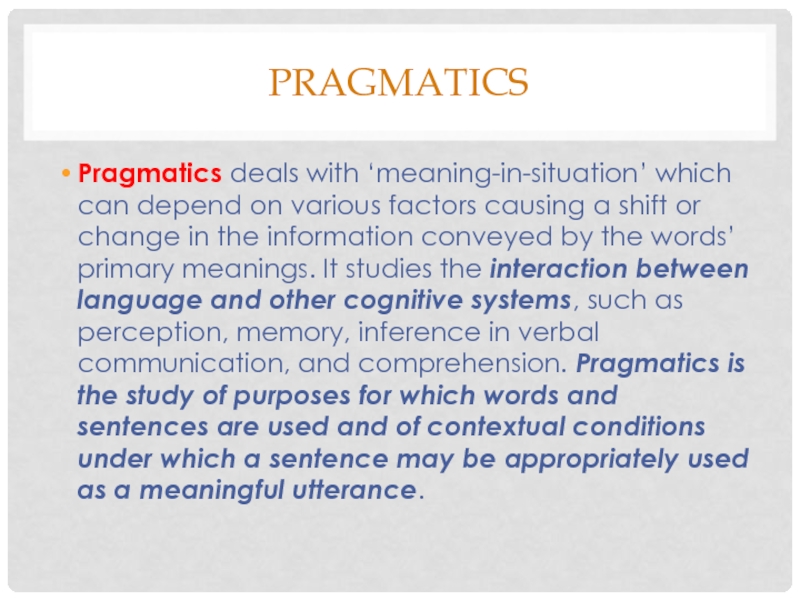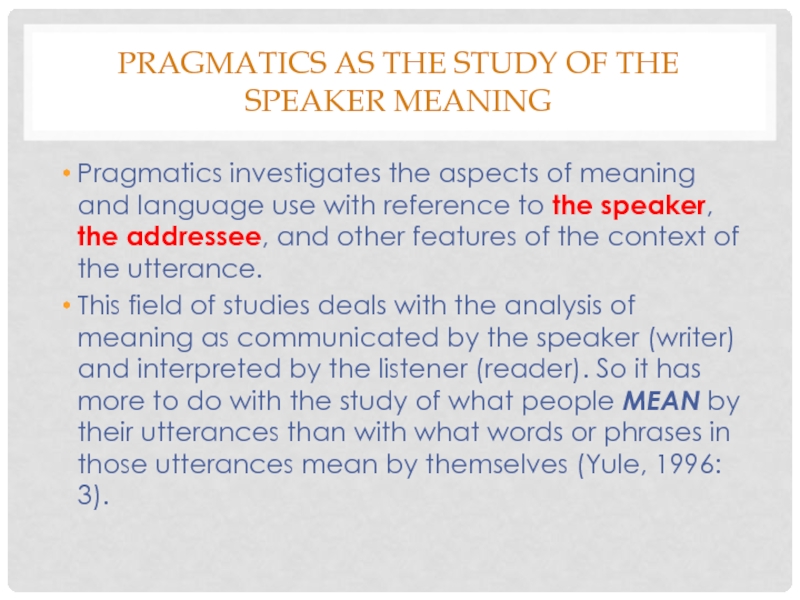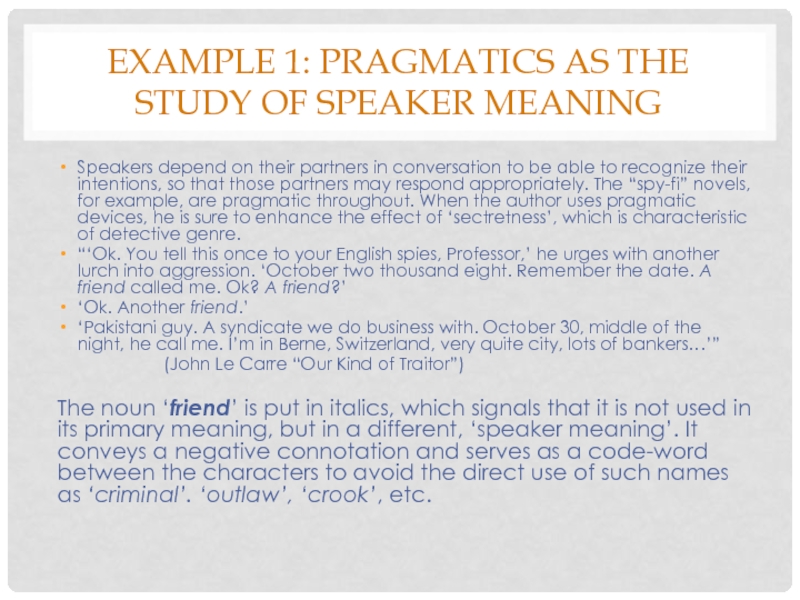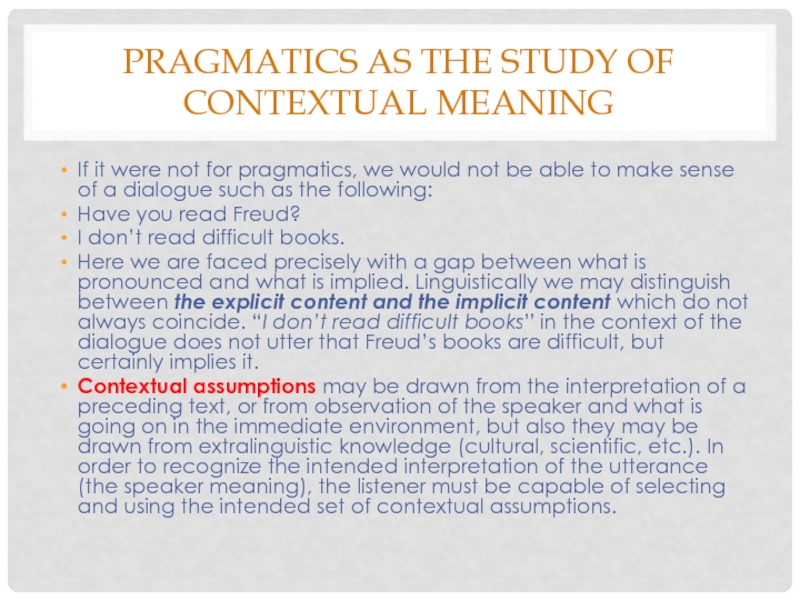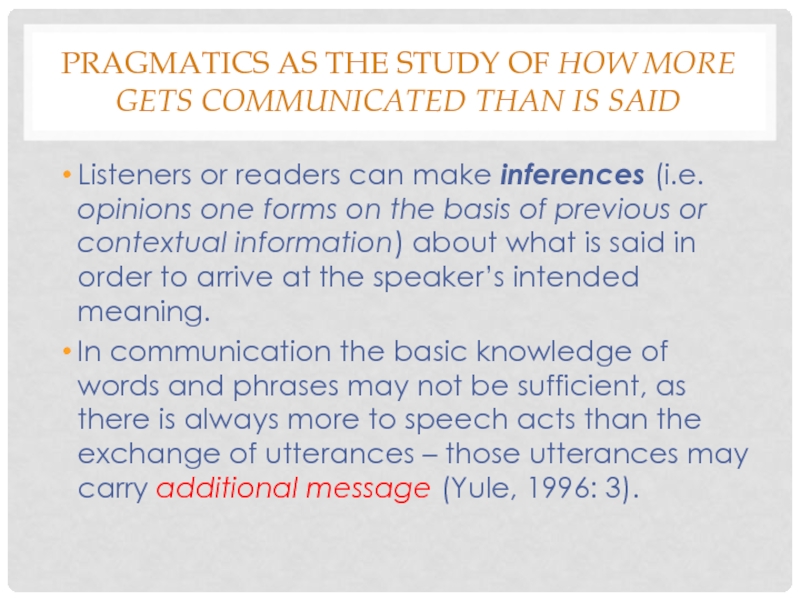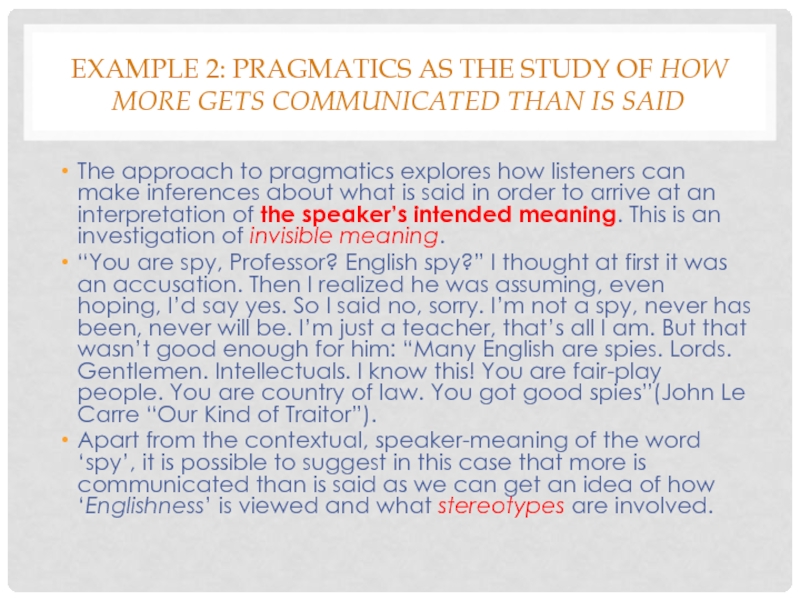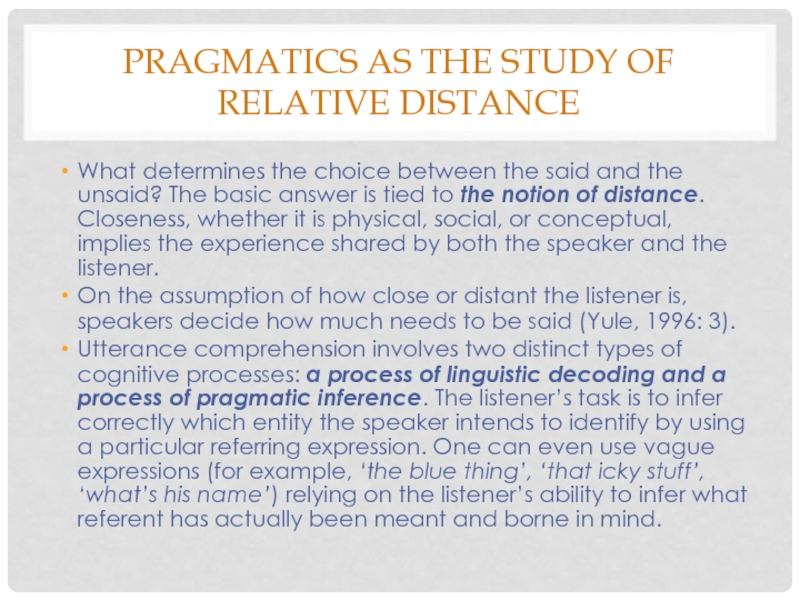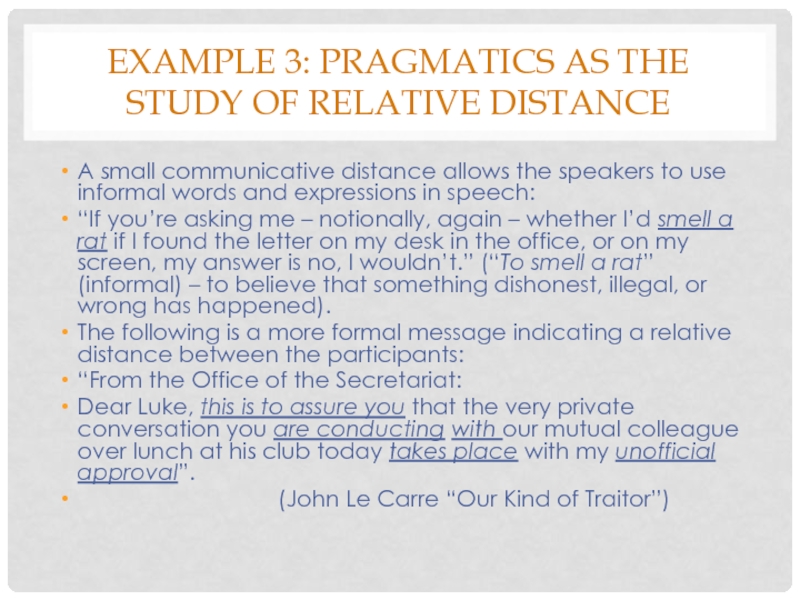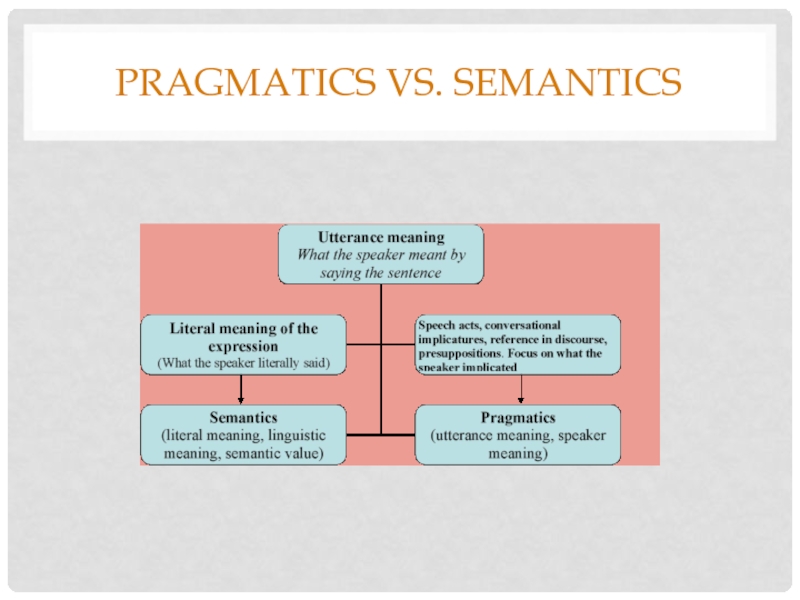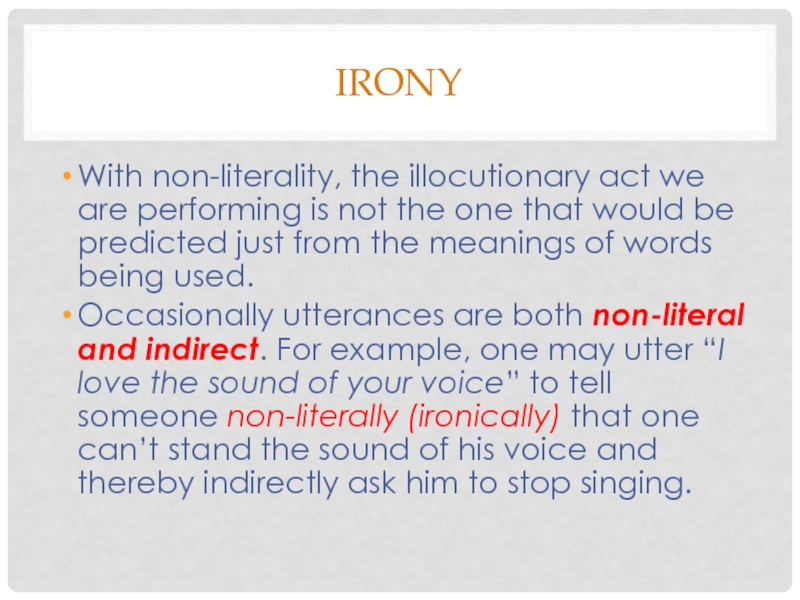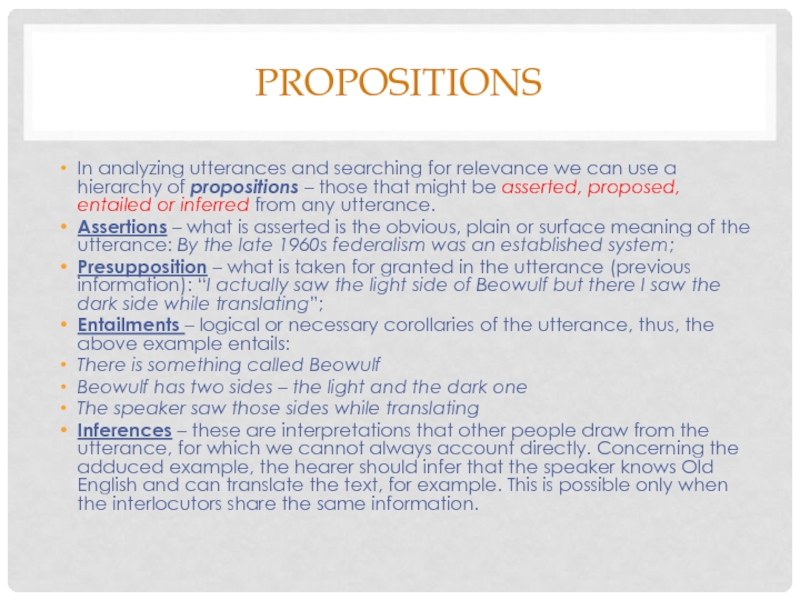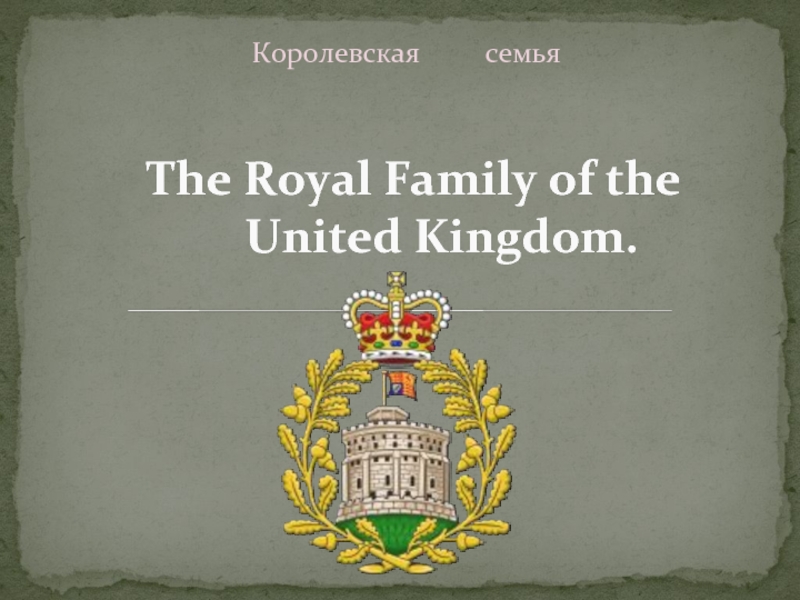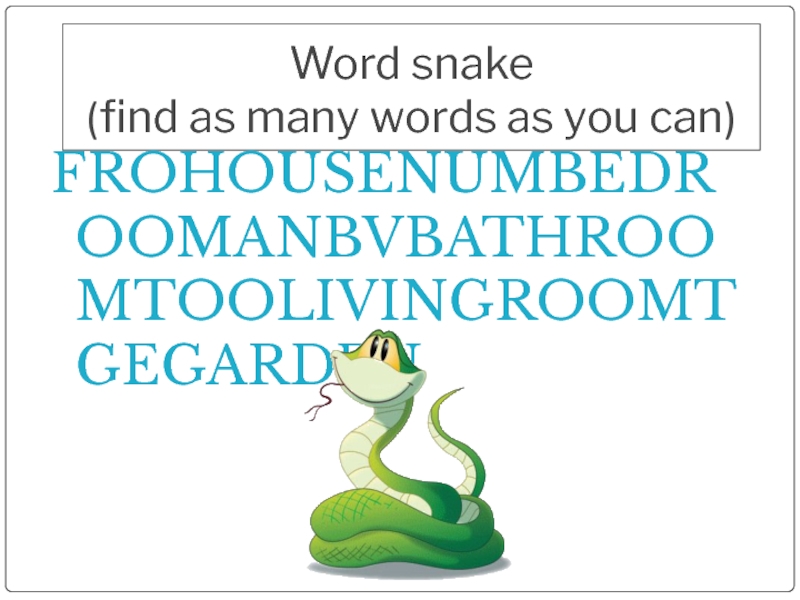- Главная
- Разное
- Дизайн
- Бизнес и предпринимательство
- Аналитика
- Образование
- Развлечения
- Красота и здоровье
- Финансы
- Государство
- Путешествия
- Спорт
- Недвижимость
- Армия
- Графика
- Культурология
- Еда и кулинария
- Лингвистика
- Английский язык
- Астрономия
- Алгебра
- Биология
- География
- Детские презентации
- Информатика
- История
- Литература
- Маркетинг
- Математика
- Медицина
- Менеджмент
- Музыка
- МХК
- Немецкий язык
- ОБЖ
- Обществознание
- Окружающий мир
- Педагогика
- Русский язык
- Технология
- Физика
- Философия
- Химия
- Шаблоны, картинки для презентаций
- Экология
- Экономика
- Юриспруденция
Contrastive lexicology 5. Pragmatics in contrastive studies and translation презентация
Содержание
- 1. Contrastive lexicology 5. Pragmatics in contrastive studies and translation
- 2. THE ORIGINS OF PRAGMATICS The approach to
- 3. PRAGMATICS: DEFINITION In David Crystal’s words, “pragmatics
- 4. THE FOCUS OF PRAGMATICS If traditionally dictionaries
- 5. PRAGMATICS Pragmatics deals with ‘meaning-in-situation’ which
- 6. PRAGMATICS AS THE STUDY OF THE
- 7. EXAMPLE 1: PRAGMATICS AS THE STUDY OF
- 8. PRAGMATICS AS THE STUDY OF CONTEXTUAL
- 9. PRAGMATICS AS THE STUDY OF HOW
- 10. EXAMPLE 2: PRAGMATICS AS THE STUDY
- 11. PRAGMATICS AS THE STUDY OF RELATIVE
- 12. EXAMPLE 3: PRAGMATICS AS THE
- 13. PRAGMATICS VS. SEMANTICS
- 14. CONVERSATIONAL IMPLICATURES AND THE COOPERATIVE PRINCIPLE Conversational
- 15. IRONY With non-literality, the illocutionary act we
- 16. PROPOSITIONS In analyzing utterances and searching for
Слайд 2THE ORIGINS OF PRAGMATICS
The approach to language study associated with the
According to the traditional view, which goes back to C. W. Morris in 1930s, the term ‘pragmatics’ is used to label one of the three major divisions of semiotics along with semantics and syntactics.
Thus, “semantics is the study of the relationships between linguistic forms and entities in the world, i.e. how words literally connect to things” (Yule, 1996: 4). Syntactics is concerned with the relationships between linguistic forms in sequences and well-formed utterances, while pragmatics “is the study of the relationships between linguistic forms and the users of those forms. In this three-part distinction, only pragmatics allows humans into the analysis” (ibid, 4).
Слайд 3PRAGMATICS: DEFINITION
In David Crystal’s words, “pragmatics has been characterized as the
The field focuses on an ‘area’ between semantics, sociolinguistics, and extralinguistic context; but the boundaries with these other domains are as yet incapable of precise definition” (Crystal, 1985: 240).
Слайд 4THE FOCUS OF PRAGMATICS
If traditionally dictionaries register words and phrases in
“There can be a considerable difference between sentence-meaning and speaker-meaning. For example, a person who says “Is that your car?” may mean something like this: “your car is blocking my gateway – move it!” – or this: “What a fantastic car – I didn’t know you were so rich!” – or this: “What a dreadful car – I wouldn’t be seen dead in it!”
The very same words can be used to complain, to express admiration, or to express disapproval” (G. Leech, Preface to the Longman Dictionary of Contemporary English, 1987).
Слайд 5PRAGMATICS
Pragmatics deals with ‘meaning-in-situation’ which can depend on various factors
Слайд 6
PRAGMATICS AS THE STUDY OF THE SPEAKER MEANING
Pragmatics investigates the aspects
This field of studies deals with the analysis of meaning as communicated by the speaker (writer) and interpreted by the listener (reader). So it has more to do with the study of what people MEAN by their utterances than with what words or phrases in those utterances mean by themselves (Yule, 1996: 3).
Слайд 7EXAMPLE 1: PRAGMATICS AS THE STUDY OF SPEAKER MEANING
Speakers depend on
“‘Ok. You tell this once to your English spies, Professor,’ he urges with another lurch into aggression. ‘October two thousand eight. Remember the date. A friend called me. Ok? A friend?’
‘Ok. Another friend.’
‘Pakistani guy. A syndicate we do business with. October 30, middle of the night, he call me. I’m in Berne, Switzerland, very quite city, lots of bankers…’”
(John Le Carre “Our Kind of Traitor”)
The noun ‘friend’ is put in italics, which signals that it is not used in its primary meaning, but in a different, ‘speaker meaning’. It conveys a negative connotation and serves as a code-word between the characters to avoid the direct use of such names as ‘criminal’. ‘outlaw’, ‘crook’, etc.
Слайд 8
PRAGMATICS AS THE STUDY OF CONTEXTUAL MEANING
If it were not for
Have you read Freud?
I don’t read difficult books.
Here we are faced precisely with a gap between what is pronounced and what is implied. Linguistically we may distinguish between the explicit content and the implicit content which do not always coincide. “I don’t read difficult books” in the context of the dialogue does not utter that Freud’s books are difficult, but certainly implies it.
Contextual assumptions may be drawn from the interpretation of a preceding text, or from observation of the speaker and what is going on in the immediate environment, but also they may be drawn from extralinguistic knowledge (cultural, scientific, etc.). In order to recognize the intended interpretation of the utterance (the speaker meaning), the listener must be capable of selecting and using the intended set of contextual assumptions.
Слайд 9 PRAGMATICS AS THE STUDY OF HOW MORE GETS COMMUNICATED THAN IS
Listeners or readers can make inferences (i.e. opinions one forms on the basis of previous or contextual information) about what is said in order to arrive at the speaker’s intended meaning.
In communication the basic knowledge of words and phrases may not be sufficient, as there is always more to speech acts than the exchange of utterances – those utterances may carry additional message (Yule, 1996: 3).
Слайд 10 EXAMPLE 2: PRAGMATICS AS THE STUDY OF HOW MORE GETS COMMUNICATED
The approach to pragmatics explores how listeners can make inferences about what is said in order to arrive at an interpretation of the speaker’s intended meaning. This is an investigation of invisible meaning.
“You are spy, Professor? English spy?” I thought at first it was an accusation. Then I realized he was assuming, even hoping, I’d say yes. So I said no, sorry. I’m not a spy, never has been, never will be. I’m just a teacher, that’s all I am. But that wasn’t good enough for him: “Many English are spies. Lords. Gentlemen. Intellectuals. I know this! You are fair-play people. You are country of law. You got good spies”(John Le Carre “Our Kind of Traitor”).
Apart from the contextual, speaker-meaning of the word ‘spy’, it is possible to suggest in this case that more is communicated than is said as we can get an idea of how ‘Englishness’ is viewed and what stereotypes are involved.
Слайд 11
PRAGMATICS AS THE STUDY OF RELATIVE DISTANCE
What determines the choice between
On the assumption of how close or distant the listener is, speakers decide how much needs to be said (Yule, 1996: 3).
Utterance comprehension involves two distinct types of cognitive processes: a process of linguistic decoding and a process of pragmatic inference. The listener’s task is to infer correctly which entity the speaker intends to identify by using a particular referring expression. One can even use vague expressions (for example, ‘the blue thing’, ‘that icky stuff’, ‘what’s his name’) relying on the listener’s ability to infer what referent has actually been meant and borne in mind.
Слайд 12
EXAMPLE 3: PRAGMATICS AS THE STUDY OF RELATIVE DISTANCE
A small communicative
“If you’re asking me – notionally, again – whether I’d smell a rat if I found the letter on my desk in the office, or on my screen, my answer is no, I wouldn’t.” (“To smell a rat” (informal) – to believe that something dishonest, illegal, or wrong has happened).
The following is a more formal message indicating a relative distance between the participants:
“From the Office of the Secretariat:
Dear Luke, this is to assure you that the very private conversation you are conducting with our mutual colleague over lunch at his club today takes place with my unofficial approval”.
(John Le Carre “Our Kind of Traitor”)
Слайд 14CONVERSATIONAL IMPLICATURES AND THE COOPERATIVE PRINCIPLE
Conversational implicatures are a special case
This message can be worked out or calculated from 1) the usual linguistic meaning of what is said, 2) contextual information and 3) the assumption that the speaker is obeying what P. Grice calls the cooperative principle when the message and does not exceed the boundaries of the background knowledge as shared with the listener.
Conversational implicatures relate to how hearers manage to work out the complete message when speakers mean more than they say.
An example is the utterance “Have you got any cash on you?” where the speaker really wants the hearer to understand the meaning “Can you lend me some money? I don’t have much on me.”
Слайд 15IRONY
With non-literality, the illocutionary act we are performing is not the
Occasionally utterances are both non-literal and indirect. For example, one may utter “I love the sound of your voice” to tell someone non-literally (ironically) that one can’t stand the sound of his voice and thereby indirectly ask him to stop singing.
Слайд 16PROPOSITIONS
In analyzing utterances and searching for relevance we can use a
Assertions – what is asserted is the obvious, plain or surface meaning of the utterance: By the late 1960s federalism was an established system;
Presupposition – what is taken for granted in the utterance (previous information): “I actually saw the light side of Beowulf but there I saw the dark side while translating”;
Entailments – logical or necessary corollaries of the utterance, thus, the above example entails:
There is something called Beowulf
Beowulf has two sides – the light and the dark one
The speaker saw those sides while translating
Inferences – these are interpretations that other people draw from the utterance, for which we cannot always account directly. Concerning the adduced example, the hearer should infer that the speaker knows Old English and can translate the text, for example. This is possible only when the interlocutors share the same information.
